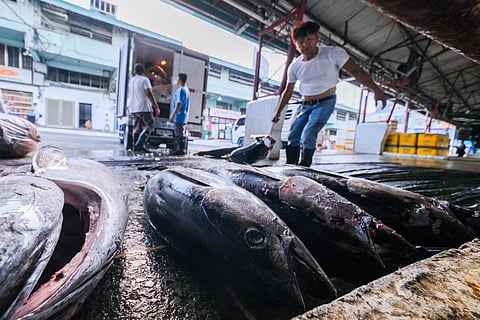
- NEWS
- the EDIT
- COMMENTARY
- BUSINESS
- LIFE
- SHOW
- ACTION
- GLOBAL GOALS
- SNAPS
- DYARYO TIRADA
- MORE

The Bureau of Fisheries and Aquatic Resources expressed on Wednesday its target of making the Philippines 100 percent food-fish-sufficient by 2028.
“Committed to steering our nation towards a sustainable future, we at BFAR are confident that our concerted efforts will lead to a bountiful harvest and secure a self-sufficient future for all,” said BFAR National Director Atty.
To achieve this target by the end of Marcos's administration, BFAR said it would improve fisheries production through increased productivity and reduced post-harvest losses of fish and fishery products.
The fisheries bureau said that this is included in the 2023-2028 Strategic Plan, which comprises measures such as the distribution of additional interventions such as new fiberglass-reinforced plastic boats, fishing gear, and paraphernalia; the establishment of mariculture parks; the reassessment and maintenance of existing mariculture parks; and the development and recommendation of supplemental guidelines for the operation and management of legislated hatcheries.
“Also included in the plan were the provision and modernization of fisheries post-harvest and cold chain technologies and facilities; establishment of common shared service facilities (CSSFs) for fish and fishery product; crafting of commodity-specific marketing plans, expanding participation in market linkaging and businesses, establishment and facilitation of direct linkage between fisherfolk borrowers and financing institutions, and maximizing utilization of government assets on logistics as well as partnership with private sector in aid of marketing activities.”
Moreover, the agency will fortify its partnership with the National Fisheries Research and Development Institute in supporting fishing technologies and providing assistance in creating fisherfolk associations and cooperatives and focus on implementing the projects Philippine Fisheries and Coastal Resiliency, or FishCoRe, and the Special Area for Agricultural Development, or SAAD.
“All these measures align with the enduring vision of the Marcos Administration of building a self-sufficient nation. Food fish sufficiency is more than just sustenance on our tables; it embodies a nation’s inherent resilience in the face of challenges and serves as a bedrock for prosperity and the overall well-being of our people,” said BFAR Director Escoto.
Besides achieving the 100-percent food-fish sufficiency level, the BFAR also aims to reduce poverty within five years in the fisheries sector, or ‘bringing the poverty incidence to 26 percent by 2028,’ achieving a sustainable and climate-resilient fisheries sector and strengthening fisheries governance.
“The Philippines’ food-fish sufficiency level, net of trade, was at 92.5 percent by 2022,” the BFAR noted.
###
